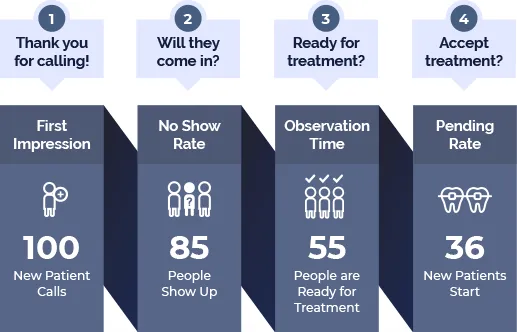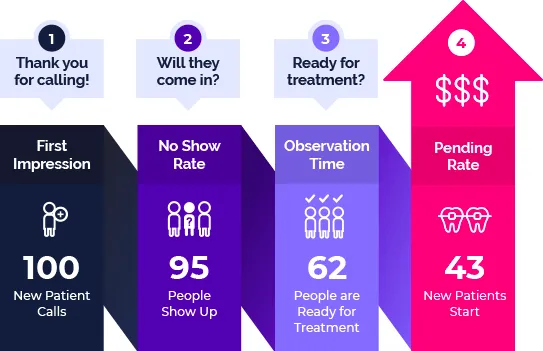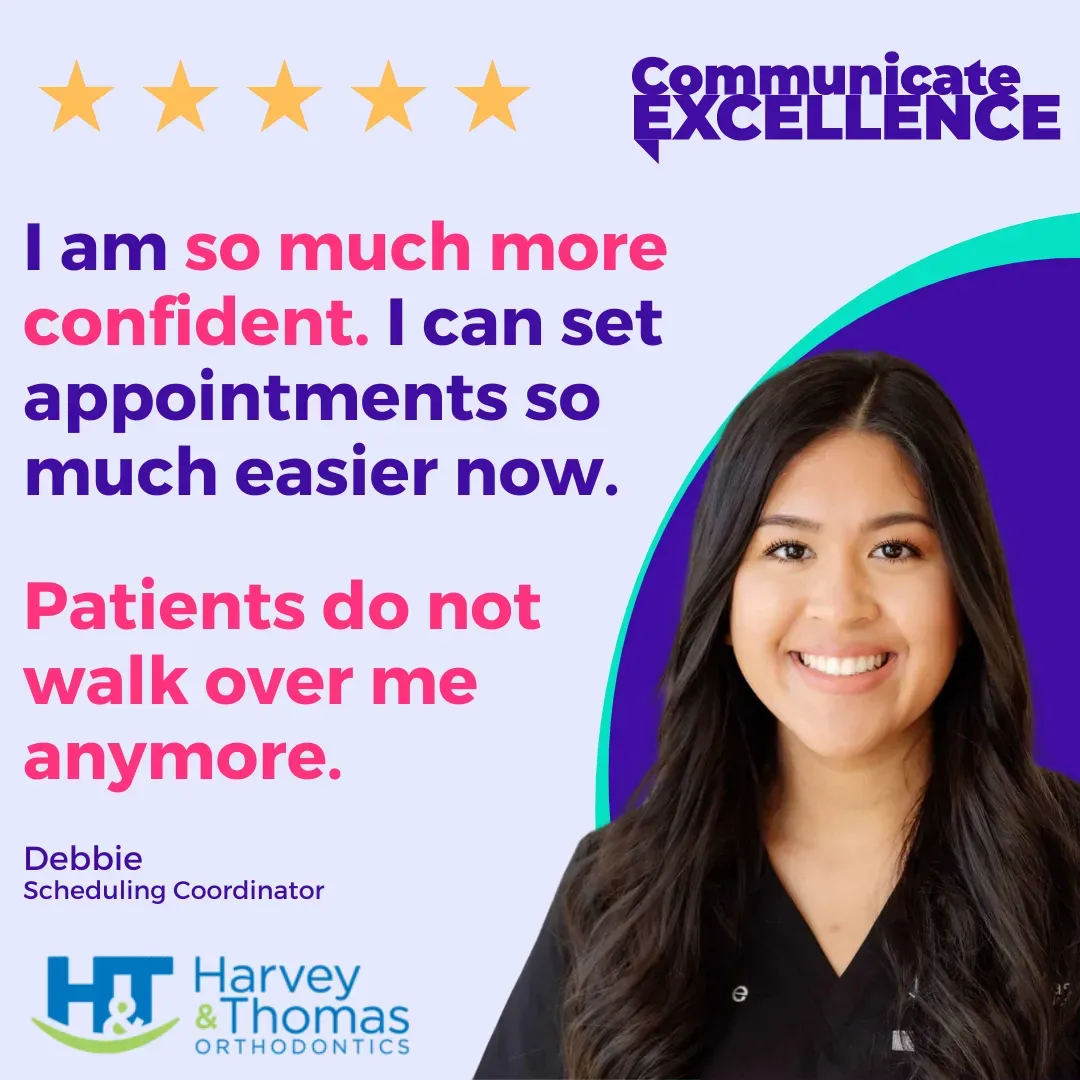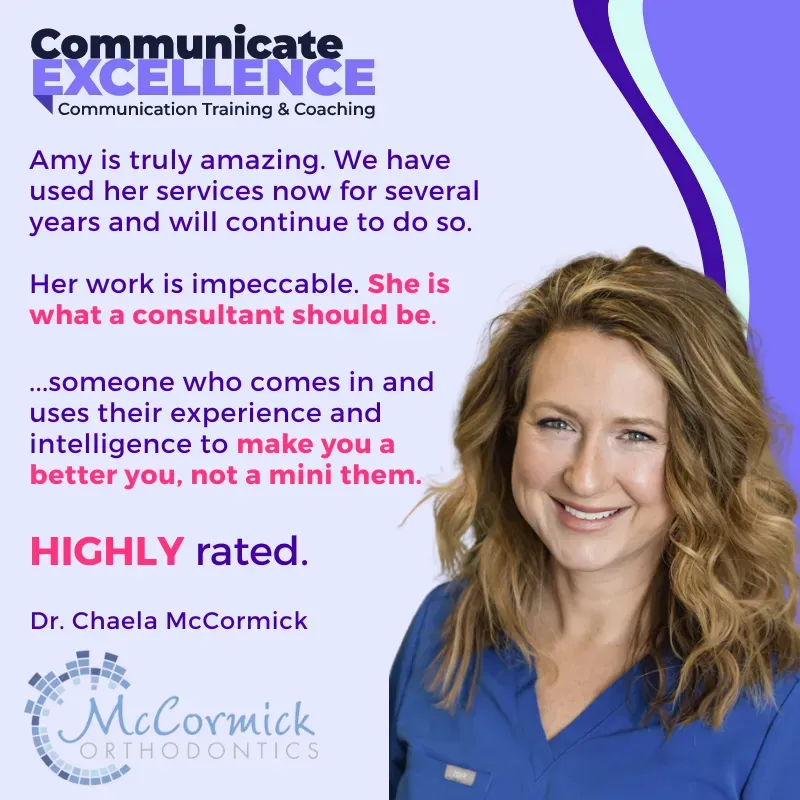Win their Loyalty
Get Certified in Making Patients Happy
Win their Loyalty
Get Certified in Making Patients Happy
Imagine Producing an Additional $300,000 Each Year
The average single doctor practice (per Gaidge), which receives approximately 850 new patient calls each year, this increase translates to nearly $300,000.
Before Amy:
After Amy:


After Amy:

From Bogged Down to Brief
Some questions can make us feel like we're tap-dancing when we should just answer the question and move on.
Amy coached this scheduling coordinator the art of BREVITY: sentences on the phone; paragraphs in person.
Before
After
From Mousy To Scheduling Ninja
This scheduling coordinator used to dread making appointments, and has now become this practice's ninja (STILL over four years later according to her Doctor!)
Amy helped Debbie feel more confident and use the proper leading question to offer appointments which put Debbie in control of the conversation.
Before
After
My customer communication training will help you to 10X your patient experience to massively impact your Win ratio!

40%
Decrease in No Shows
because all your customer relationships are real connections, right from the start.

64%
Reduction in Longer, Problem Calls
because you're no longer inadvertently upsetting your valued customers.

Large Call to Action Headline
20%
Increase in Production
because you've built trust with your customers from the beginning, so your win ratio is much higher.
What Our Clients Are Saying:
HOW TO WORK WITH ME

Phone Coaching
Telephone skills training for efficient and impactful first impressions with your receptionist and front office team.

Sales Coaching
Treatment Coordinator communication training for consultations to adapt, read the room, and win the start.

Workshops & Keynotes
Book me for your team or appreciation event you are running to provide customer experience training.
Join my mailing list for regular inspiration, tips and techniques to share with your team.
Watch my short video on the 5 Types of Questions as a welcome gift.
Did you know there are different types of questions? Annoyingly, we often default to the question type that doesn't actually help move us towards our goal.
Take a few moments to watch my short video and you'll learn a few of the different types so you can be more conscious of your speaking habits and bring the correct question type to the situation at hand.
Do share this video with the rest of your team to help them make the same change - it's my little thank you for having you join my mailing list.


3 Tools to Handle the Last-Minute Reschedule
Let’s face it, keeping calm when frantic and insistent moms phone in to reschedule an appointment with just a few hours of notice, takes tact. But there are a few tools you can keep in mind to make your job easier. And keep in mind, you are not alone; everybody plays a part.
1 – Setting the Expectation
“I would be happy to help you. As I look to the schedule, I’m looking for the next available appointment to help keep you on track.” You’ve planted the seed there that you are looking to keep them on track. Keeping them in the rotation might mean that they are offered appointments that are not at these client’s ideal times. That is not your fault. It is what it is.
2 – State the Facts
You are in control of the conversation and the schedule. All TIMES are FACTS and All FACTS are STATEMENTS. No asking questions, unless they are leading questions… questions that lead to a specific answer. “Would that work for you?” “The doctor has availability at 10:30 or 11. Which one works for you?” Pretend that you’re delivering the weather report, there’s no emotion involved.
You cannot manufacture, or fabricate, holes in the schedule. The doctor can only be in one place at a time. If the assistants are rushing to accommodate your ‘squeezing in’ a last-minute reschedule, shortcuts can emerge resulting in less-than-ideal care. We found just that. Looking at a repeat bond failure on the same bracket, we found that most of those brackets that needed more than one repair were put back on after 3:30 in the afternoon. Those appointments were ‘squeezed in.’ We think we are being helpful, but we are not.
“I am happy to try to find you an appointment since we are in the middle of a rotation. The doctor happens to have a 10am or 2pm open. Which one works best for you?” If Mrs. Jones doesn’t want either slot and asks again about the 3:30 time on the following day. Remind her, “If I try to find you a 3:30 appointment, that is going to put us out another four to six weeks, and that could very likely impact treatment time. Do you wish me to look there or would you like me to keep looking for a time to keep you on track?”
3 – VIP List
We know there are moms with direct lines to the doctors. We have found a few successful ways to deal with these insistent and argumentative moms. Provide that great customer service and allow them to have their way.
We do this by: Create a shortlist, with a goal of under one percent of the clients, of VIPs (Very Involved Parents). Put an alert on their chart. Accommodate them rather than going through the steps and giving in at the end. The ruckus they can cause in the office or on social media is not worth the tussle. , just avoid engaging them, and provide excellent customer service.
Our Clients' Experiences






Preferred Provider For:
As a bonus for being a member of these organizations you will receive a discount on my services.
Schulman Group leaders say
“The Schulman Group is pleased to call Amy Demas/Communicate Excellence one of our valued preferred consultants and a huge advocate for our educational programming efforts. Her "can do" attitude has served the group in many capacities over the years…..as a consultant, as a program speaker and most recently served as moderator for our Doctor and Team Meeting. As speaker and consultant, Amy offers invaluable insight on communication skills for all orthodontic team members and has helped a number of our members streamline and improve office interactions with patients.”
Emily, Mari's List says
"Amy Demas is a shining star when it comes to training front desk staff, scheduling coordinators and treatment coordinators. She truly communicates excellence. Mari's List feels confident endorsing Amy because of her long history of exceptional professionalism and glowing reviews from our members."










